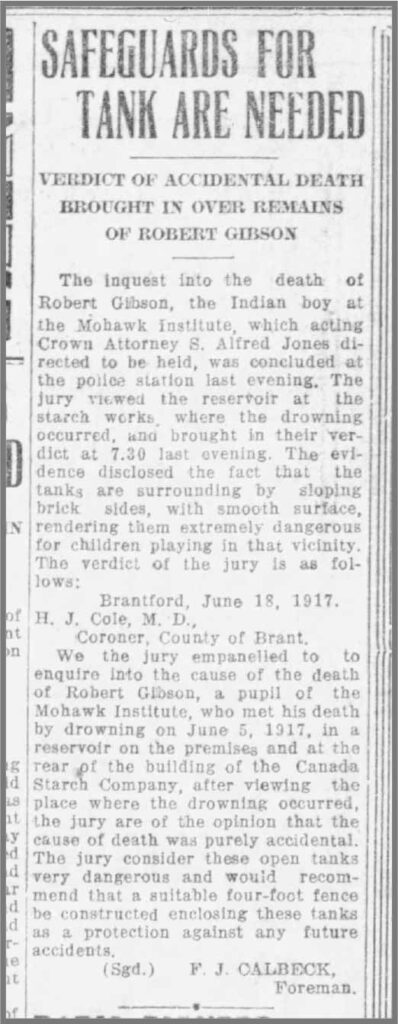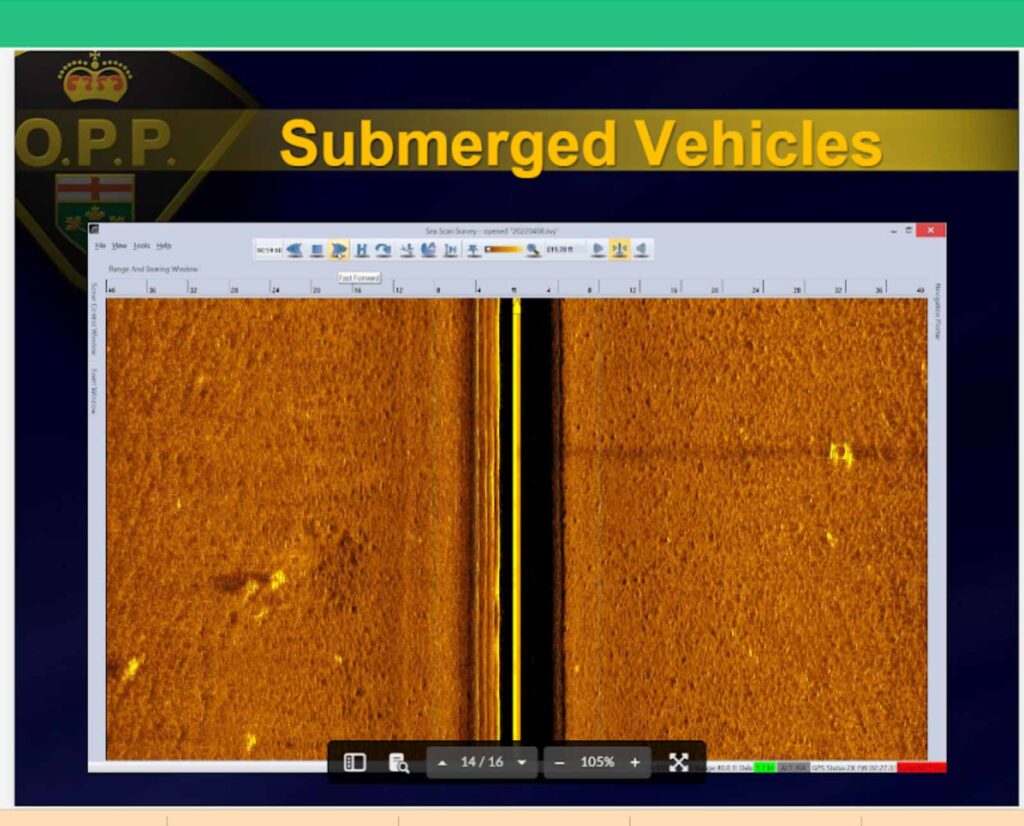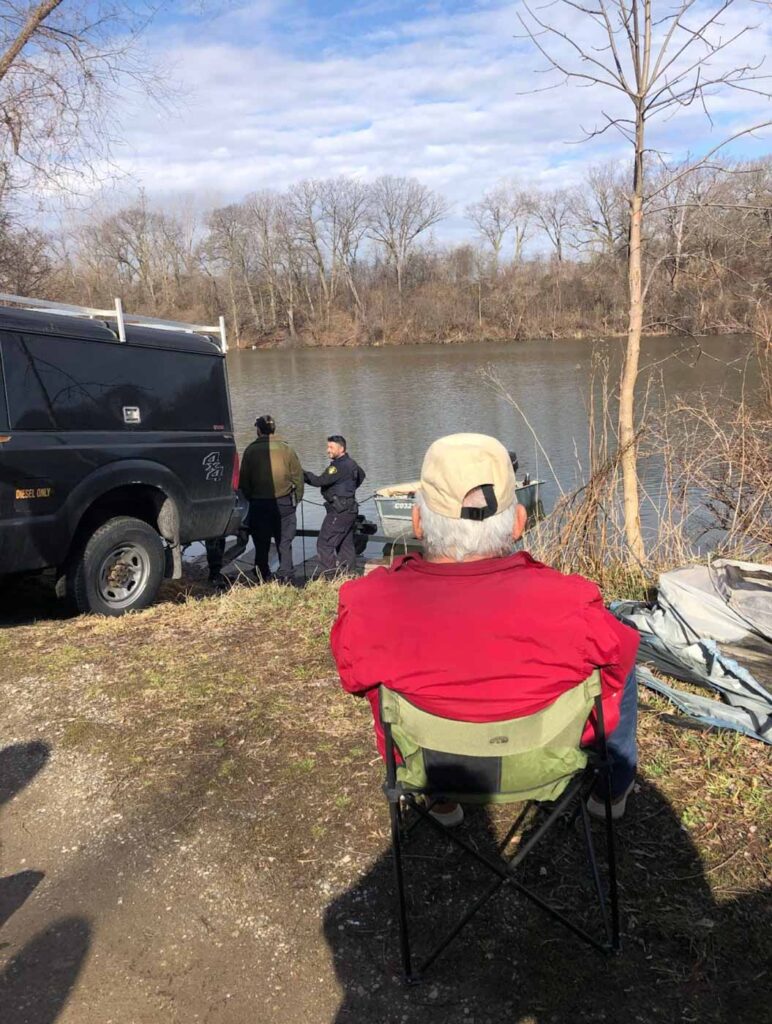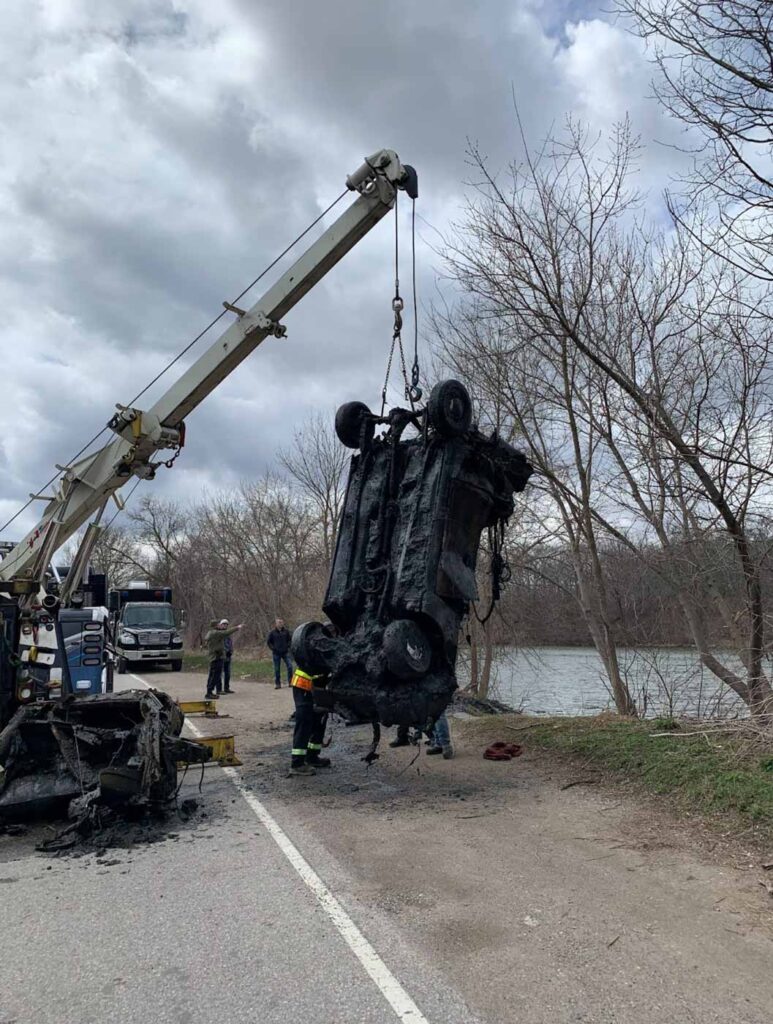The Mohawk Lake, Mohawk Canal and surrounding parklands are in the southeast section of the City of Brantford, near the City’s downtown and drain to the Grand River. Mohawk Lake was constructed in the 1800s as part of the canal system to provide access for barges traveling through Brantford and to enable boats to turn around. In the early 1900s, the Lake and surrounding parkland provided the community with recreational opportunities.1

Why Was There a Search of Mohawk Lake?
As part of the Survivors’ Secretariat’s mandate to “organize and support efforts to uncover, document and share the truth about what happened at the Mohawk Institute during its 136 years of operation”, Survivors are using historical records as well as current technologies to search for missing children and unmarked burials.
The Secretariat is searching the 600 acres of land associated with the former Institute, including the lands attached to the Mohawk Chapel and waterways such as Mohawk Lake and the canal. To our knowledge, the Survivors’ Secretariat may be one of the first Survivors’ groups to have searched a waterway for missing children of Indian Residential Schools.
Why Search Mohawk Lake in Particular?
Survivors of the Mush Hole have reason to believe that children may have drowned and/or were disposed of in the Lake.
“My feelings were mixed with anticipation and hope that just maybe one of our children would surface, as horrible as that is. Hope that we could put one of our children or one family at peace would be a start. But, as the SCUBA divers worked to bring in the debris, with all the black muck, I didn’t want one of our children to be encased in that stench. At day’s end when I left, I sat in my truck and cried.”
– Diane Hill, Survivor and Board Member
How Was the Search Conducted?
On the first morning of the search, Survivors, Board members, Police Task Force members, and the Underwater Search Team, participated in a ceremony conducted by the Secretariat’s Cultural Monitor, Peter Schuler.
“It is important to use our ceremonial ways when we do this work, and with that in mind I used my Pipe to seek help from those entities that we recognize as Spiritual Helpers so that the people conducting the search remained safe and were able to see what is required of them.
We recognize that the work is required because a harm was done and that in itself is reason to be cautious. Even if the perpetrators of that harm thought no one saw it, the Ancestors were [witnesses].
The perpetrators tried their best to cut off our communication with the Ancestors, but someone will always hear them and the truth will come forward.”
– Peter Schuler, Cultural Monitor
What Technology was Used?
Survivors have used all means necessary to expedite a safe and thorough search. At the request of Survivors, the Police Task Force coordinated with Ontario Provincial Police and Brantford Police underwater search teams to conduct the search of the Lake
The search team used “side scan sonar” technology to search the lake. Side scan sonar is a method of underwater imaging that uses narrow beams of acoustic energy (sound) that is transmitted out to the side of a towfish and across the bottom of the waterway. Sound is then reflected back to the towfish after striking the bottom and/or any other objects. A line-by-line reference is established and is then interpreted by a topside (land) unit.

“We felt a side scan sonar search of the lake itself was effective to cover a large area and to look to identify anything that could confirm any theory, story or possible event that may have resulted in a lost child including misadventure, intentional act or attempt to conceal a death.”
— Kevin Gorman, Staff Sergeant #10391, Unit Commander

What Has Been Found to Date?
After searching the Mohawk Lake, there are, currently, no findings/evidence of children in the Lake from the Mohawk Institute. If further evidence is found, the Survivors’ Secretariat will share this information in a timely manner. Searches of the Lake were, however, able to remediate several cars from the 1970s but, again, no evidence of children’s remains were uncovered. It is also important to note that the Mush Hole closed in 1970 and, thus, because the remediated cars are from the 1970s, there appears to be no connection between these vehicles and children from the Mush Hole.
Although the Secretariat cannot have absolute certainty that children are not in the Lake or Canal because of the excessive sludge at the bottom of the waterway, the Underwater Search Team did what they could with the technology that’s currently available. This search, however, did contribute to the cleaning up of the Mohawk Lake by removing old rotting cars from the water.

As the search continues for missing children and unmarked burials, it is critical for Survivors and their families to continue sharing their truths with the Secretariat or with the Police Task Force. All information is important and can help.
“Local knowledge of the Survivors has added information during the search that puts perspective on what may or may not have happened.
— Kevin Gorman, Staff Sergeant #10391, Unit Commander
For further information about Mohawk Lake as well as information about the 2020 remediation plans and environmental assessment, you may wish to view this report.
Although the Secretariat cannot have absolute certainty that children are not in the Lake or Canal because of the excessive sludge at the bottom of the waterway, the Underwater Search Team did what they could with the technology that’s currently available. This search, however, did contribute to the cleaning up of the Mohawk Lake by removing old rotting cars from the water.